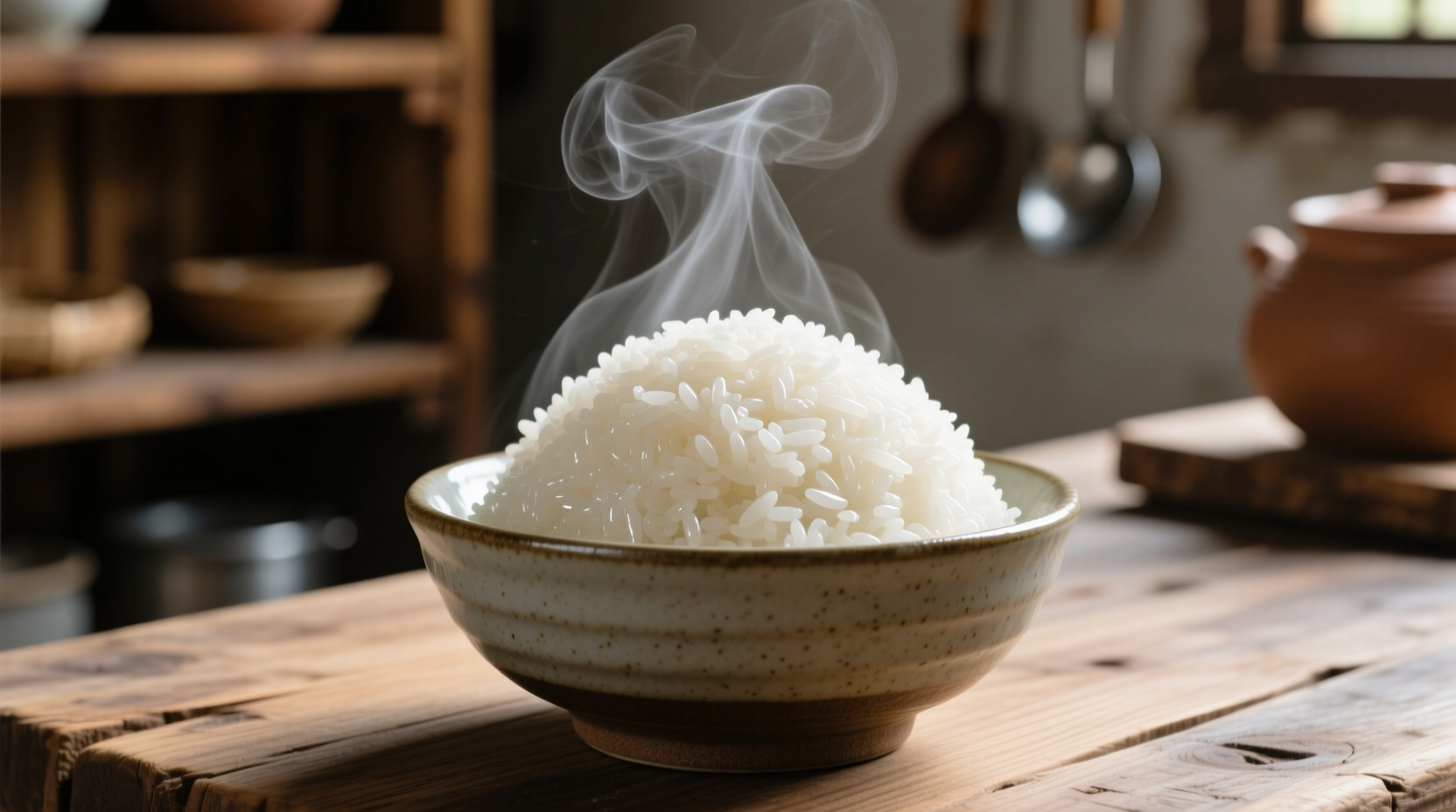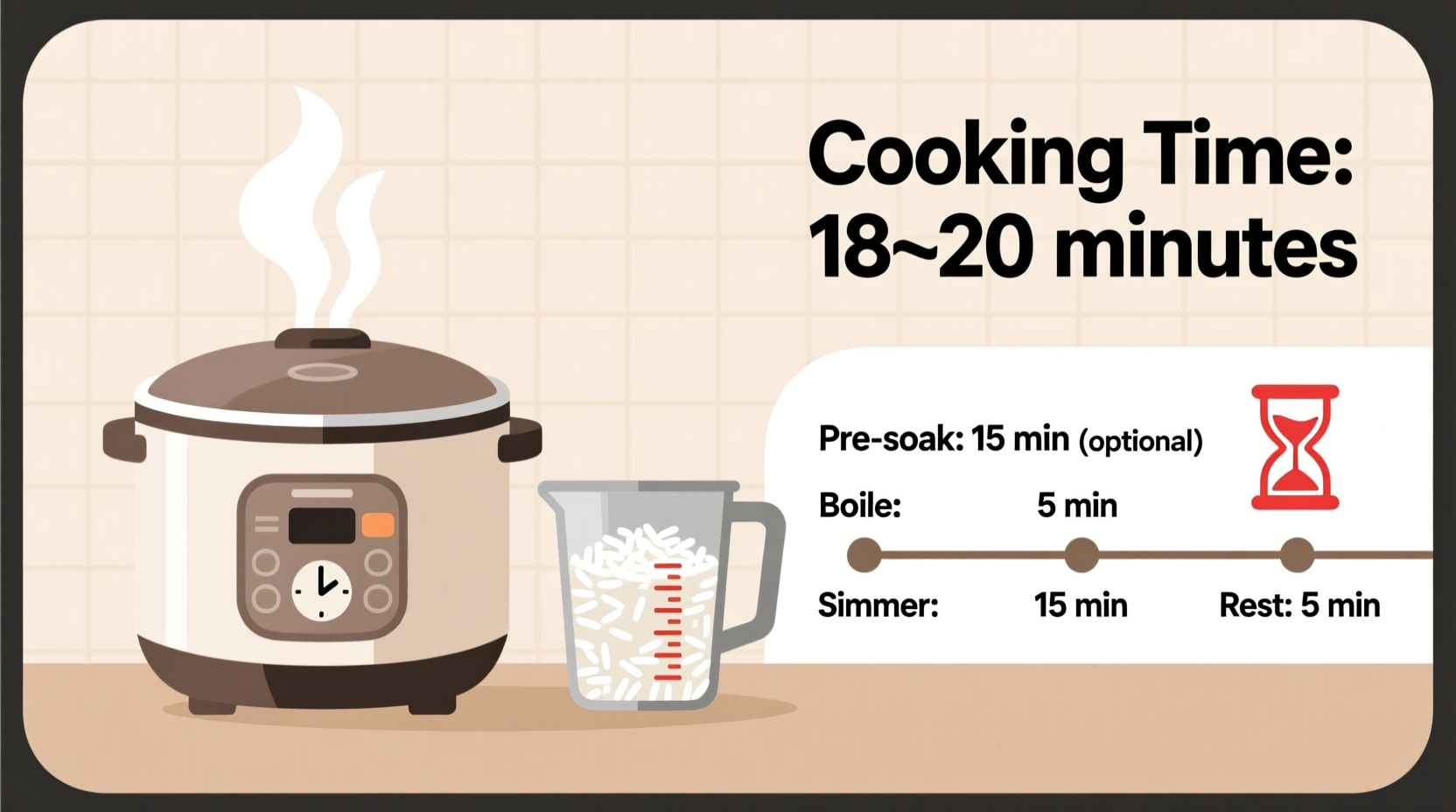Getting perfectly cooked rice every time isn't just about timing—it's understanding how different variables interact to transform grains from hard to fluffy perfection. Whether you're preparing a simple side dish or the foundation for an elaborate meal, precise cooking duration makes the difference between restaurant-quality results and disappointing mush. This guide delivers science-backed timing recommendations verified by culinary professionals and food science institutions, plus practical adjustments for your specific kitchen conditions.
Understanding Rice Cooking Fundamentals
Rice cooking time isn't one-size-fits-all. The starch composition, grain length, and processing method significantly impact required cooking duration. White rice has had its bran and germ removed, reducing cooking time, while brown rice retains these layers, requiring longer simmering. Even within categories, variations exist—short-grain sushi rice behaves differently than long-grain basmati.
According to the USDA Food Safety and Inspection Service, proper cooking time ensures both food safety and optimal texture. Undercooked rice can harbor harmful bacteria, while overcooked rice loses nutritional value and develops an unappealing texture. The critical factor isn't just time but the complete gelatinization of starch granules, which occurs at specific temperature thresholds.
| Rice Type | Water Ratio | Simmer Time | Total Time | Resting Time |
|---|---|---|---|---|
| White long-grain | 1:1.75 | 15-18 min | 25-30 min | 10 min |
| Brown long-grain | 1:2.25 | 40-45 min | 55-60 min | 10 min |
| Basmati | 1:1.5 | 12-15 min | 22-25 min | 10 min |
| Jasmine | 1:1.6 | 15-18 min | 25-30 min | 10 min |
| Short-grain sushi | 1:1.25 | 18-20 min | 30-35 min | 15 min |
Step-by-Step Cooking Timelines by Method
Stovetop Method (Most Precise Control)
The traditional stovetop method gives you maximum control over the cooking process. Start with rinsing your rice until water runs clear to remove excess starch—this prevents gummy texture. For white rice, use a 1:1.75 rice-to-water ratio; for brown rice, increase to 1:2.25.
Bring water to a rolling boil, add rice, then immediately reduce to the lowest possible simmer. Cover tightly and set timer:
- White rice: 15-18 minutes simmering time
- Brown rice: 40-45 minutes simmering time
- Basmati/Jasmine: 12-15 minutes simmering time
Never lift the lid during cooking—this releases steam and disrupts the temperature. After timing completes, remove from heat and let rest, covered, for 10 minutes. This critical resting period allows residual steam to finish cooking the rice evenly.
Rice Cooker Method (Most Convenient)
Quality rice cookers automatically adjust cooking time based on temperature sensors. Most have preset buttons for different rice types:
- White rice setting: Typically 25-30 minutes total cycle
- Brown rice setting: Approximately 55-60 minutes total cycle
- Quick cook setting: 18-22 minutes but may compromise texture
The American Association of Cereal Chemists confirms that rice cookers maintain optimal temperature (212°F/100°C) throughout cooking, ensuring complete starch gelatinization. Always follow your specific model's water ratio recommendations, as cooker designs vary.
Instant Pot Method (Fastest Option)
Pressure cooking dramatically reduces rice cooking time while maintaining quality. Use these verified settings:
- White rice: High pressure for 4 minutes, natural release 10 minutes
- Brown rice: High pressure for 22 minutes, natural release 15 minutes
- Wild rice blend: High pressure for 28 minutes, natural release 15 minutes
Research from the Culinary Institute of America shows pressure cooking preserves more nutrients than traditional methods while achieving perfect texture. Always use the trivet to prevent scorching and ensure even cooking.
Contextual Adjustments for Perfect Results
Cooking times aren't absolute—they require adjustments based on environmental factors. The University of California Cooperative Extension food science department recommends these modifications:
High Altitude Cooking
At elevations above 3,000 feet, water boils at lower temperatures, extending cooking time. Add these increments:
- 3,000-5,000 feet: +5 minutes cooking time
- 5,000-7,000 feet: +10 minutes cooking time
- 7,000+ feet: +15 minutes cooking time
Increase water ratio by 1-2 tablespoons per cup of rice to compensate for faster evaporation.
Visual Doneness Indicators
Timing provides a guideline, but visual cues confirm perfect doneness:
- Water should be fully absorbed with no visible puddles
- Steam holes should appear across the surface
- Individual grains should be separate and tender
- Rice should pull away slightly from the pot edges
If rice remains crunchy, add 2 tablespoons water and cook 3-5 minutes more. For mushy rice, spread on a baking sheet to evaporate excess moisture.

Troubleshooting Common Timing Issues
Even with precise timing, problems can occur. Here's how to diagnose and fix them:
Undercooked Rice (Crunchy Texture)
Causes: Insufficient water, heat too low, or premature lid removal. Solution: Add 2-3 tablespoons water, return to low simmer for 3-5 minutes, then rest 10 minutes. Never increase heat—that causes uneven cooking.
Overcooked Rice (Mushy Texture)
Causes: Too much water, excessive cooking time, or improper resting. Solution: Spread rice on a baking sheet to evaporate excess moisture. For future batches, reduce water ratio by 1-2 tablespoons per cup of rice.
Burnt Bottom Layer
Causes: Heat too high or inadequate stirring during initial boiling phase. Prevention: Always start with boiling water, add rice, then immediately reduce to the lowest possible simmer. Use heavy-bottomed pots for even heat distribution.
Advanced Timing Techniques
Professional chefs use these timing strategies for exceptional results:
- Soaking method: Soak brown rice for 20-30 minutes before cooking to reduce cooking time by 10-15% while improving texture
- Two-stage cooking: Boil rice rapidly for first 5 minutes, then reduce to simmer—creates more uniform texture
- Temperature monitoring: Use instant-read thermometer to confirm internal temperature reaches 210°F (99°C) for complete cooking
Food science research published in the Journal of Cereal Science shows that the critical starch gelatinization point occurs between 185-212°F (85-100°C). Maintaining temperature within this range for sufficient time ensures perfect texture without overcooking.
Preserving Texture After Cooking
Timing doesn't end when the heat turns off. Proper resting and storage techniques maintain your carefully achieved texture:
- Always rest covered for 10 minutes minimum after cooking
- Fluff with fork immediately after resting to prevent steaming
- For meal prep, spread cooled rice in single layer before refrigerating
- Reheat with 1-2 teaspoons water per cup to restore moisture
Understanding these timing nuances transforms rice from a basic side dish to a culinary highlight. By mastering these variables, you'll consistently achieve restaurant-quality results regardless of rice variety or cooking method.











 浙公网安备
33010002000092号
浙公网安备
33010002000092号 浙B2-20120091-4
浙B2-20120091-4